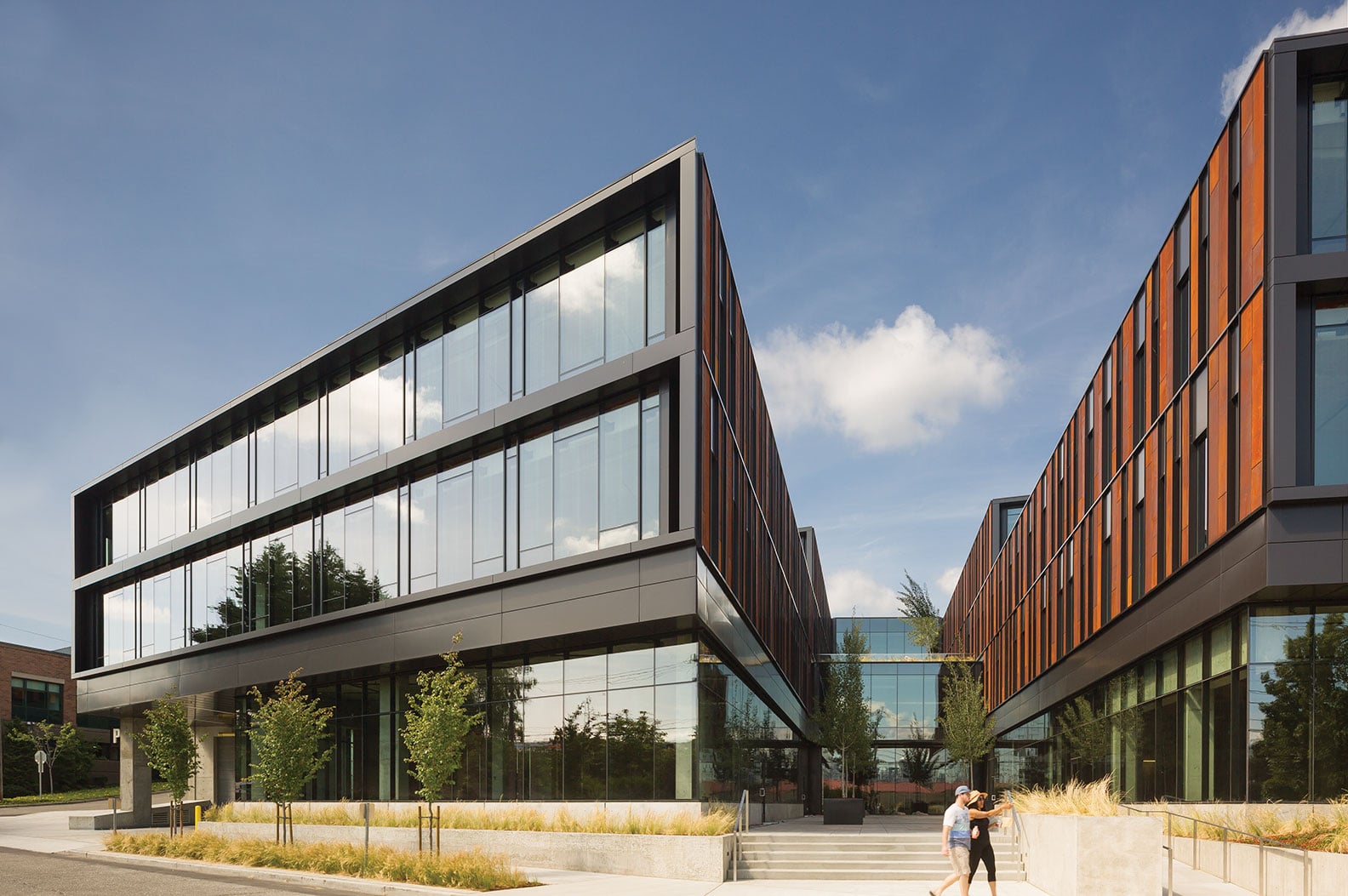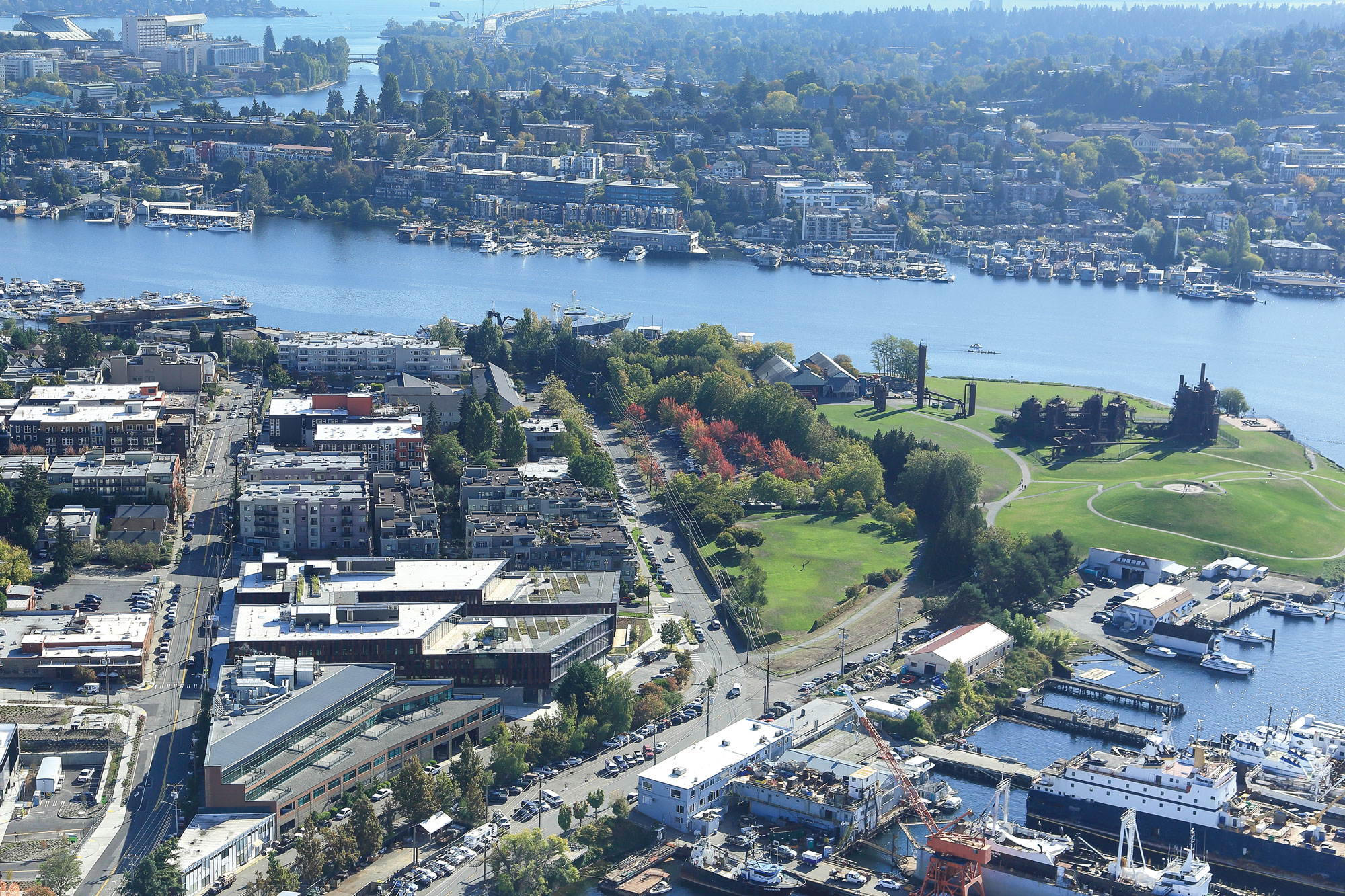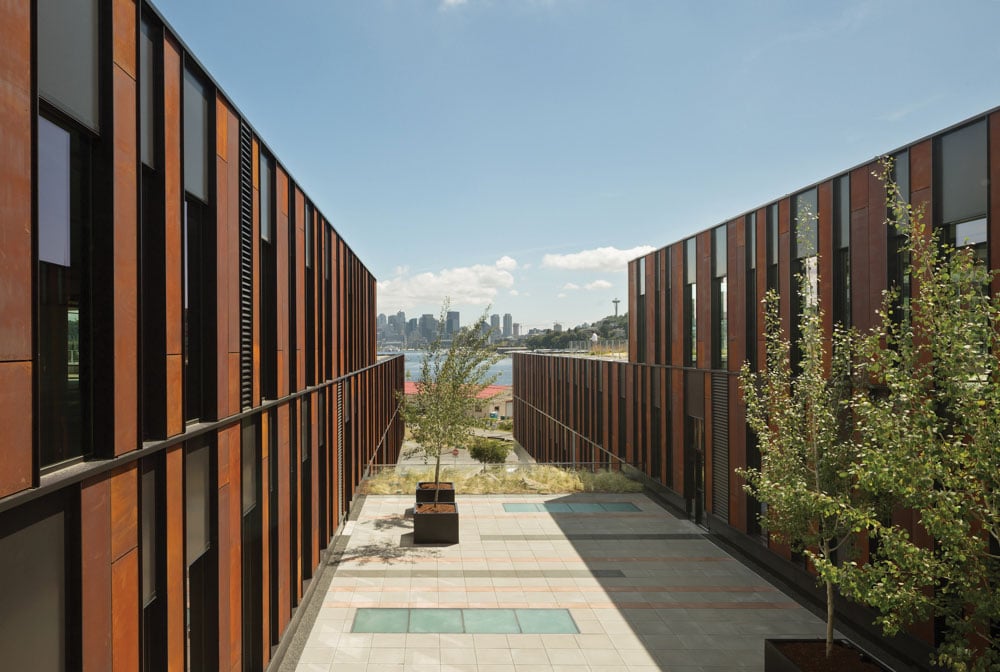
Completed in 2016, Seattle’s NorthEdge combines natural light, outdoor spaces, and continuous floorplates for a creative, communal feeling. [Photo: Lara Swimmer]
Using Design to Integrate Technology and Community at NorthEdge
In 2013, a brownfield sat, perched on a hill, adjacent to sparkling waters overlooking a perfect view of the Seattle skyline. This derelict service yard separated the cozy homes of Seattle’s Fremont and Wallingford neighborhoods from Lake Union, where, on sunny days, boaters, paddleboarders, kayakers, and seaplane pilots revel in an aquatic playground. “There were a couple of abandoned structures on the site,” recalls Erik Mott, design principal at Perkins + Will in Seattle. “They were some sort of public works, industrial low-rise buildings. It was definitely in need of something different—it was an eyesore in the community.”
Four years later, the space has been transformed into a showcase of a new Seattle, one that marries neighborhoods with technology, growth, and aesthetics. Dubbed NorthEdge, it is home to a 208,000-square-foot technology office space and leading data visualization company, Tableau. The building stretches a full city block, while incorporating design tenets of maximized natural light, outdoor spaces, and large, continuous floorplates offering a variety of experiences.

[Photo: Tim Rice]
It’s designed as a single four-story building organized around a 38-square-foot outdoor courtyard. “Taking a block and developing a courtyard type of building that can be experienced either as two separate buildings or as a single building gave us the opportunity to create a sense of a campus,” Mott says. The simultaneous experience of being in one place and in several different places creates identity on multiple levels, he adds, for building tenants and the community alike.
Perhaps most importantly for NorthEdge neighbors, the building’s standout design still blends in. Extensive glass walls create a transparent lobby space, allowing pedestrians to see directly through the building to the lake below. The central terrace provides another view of Seattle’s in-demand waterfront.
To further blend with the community, designers took inspiration from the nearby Gas Works Park, a beloved local park that stands as a monument and museum to Seattle’s industrial past. “Gas Works is this very iconic place, and it was created as a public park in the mid-60s and ’70s from a formerly industrial facility,” Mott says. “The idea of reclaiming land used for an industrial purpose was, conceptually, something we wanted to build on. There was an opportunity to create a public space, a place for a community to have an identity and to experience the water’s edge.” Materially, that expression took the form of weathered steel, concrete, and glass.

[Photo: Lara Swimmer]
NorthEdge was originally configured as a research space, but as the design process played out over quite a few years, the development plan changed. “The objective changed to a workplace office environment, so we adapted the building structure, floor heights, and systems of the building to meet a very forward-looking workspace,” Mott says. LEED Silver–certified, the building’s amenities include easy access to public and alternative transportation. Kayak and bike storage allow tenants to take advantage of their proximity to Lake Union and the Burke-Gilman Trail, a bike path connecting much of the city. What’s perhaps most exciting in terms of sustainability, however, was the redevelopment of the site around water and water management.
The building itself is stacked along the grade of its hillslope. “And that hillside is a watershed with underground water heading to the lake. The water was dirty and had to be cleaned up,” Mott says. Maintaining the integrity of the watershed was an intensive part of the design process. The development’s LEED certification notes a continued focus on water use, with a 57% reduction in landscaping use and a 35% reduction in potable water use. “It was a very exciting building to work on and see constructed because of its unique approach in terms of organizing the mass of the building on the site,” Mott says. “It’s always great to work on a building with innovative and unique development goals.”
